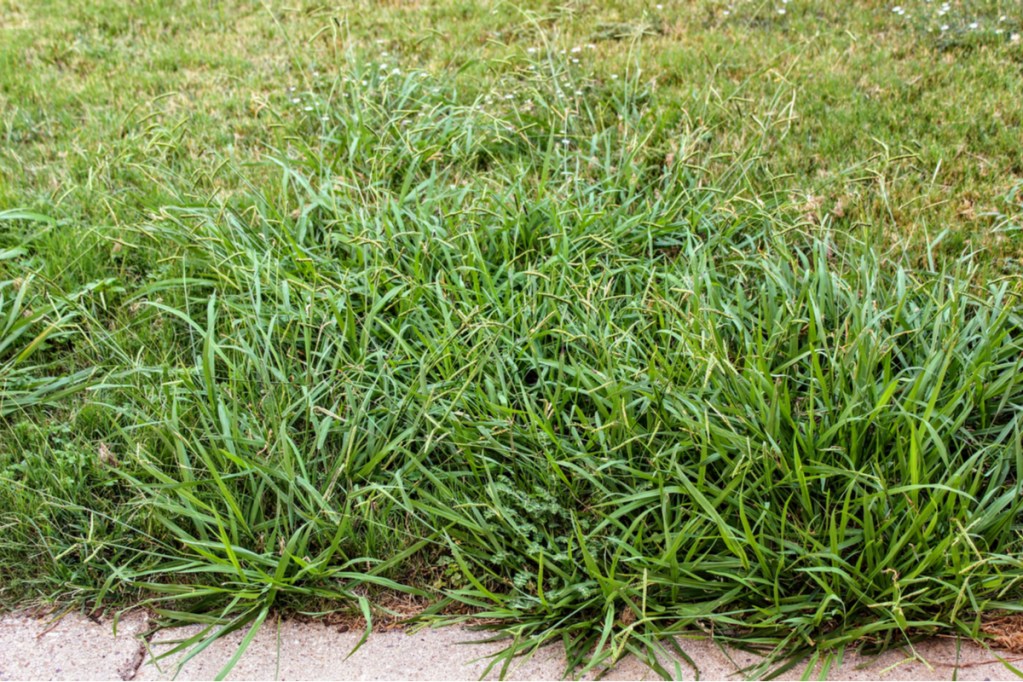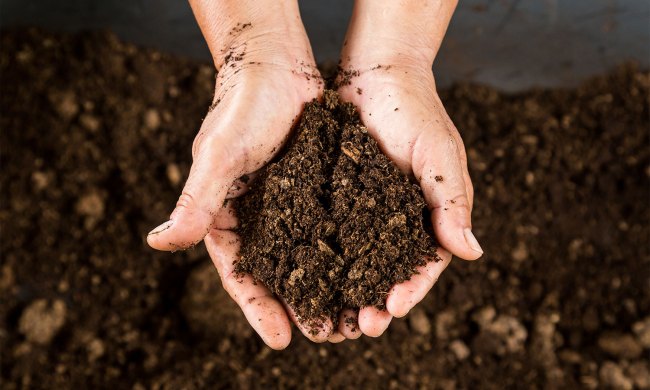No matter how hard we try, weeds will always come back. They’re part of the cycle of nature, growing throughout your lawn and even into the raised garden beds you worked so hard to build. And it doesn’t help that there are so many different types of weeds. The good news is: They can almost always be removed.
Some are easier to deal with, and others take more effort to get rid of, but with enough determination you can clear away most weeds. The key to successful weed removal is identifying what type of weed you’re dealing with. To help you with that, we’ve put together this guide to some of the most common types of weeds.
Thistle weeds

Thistles are an invasive weed most known for their bright purple heads and prickly greens. At any given point in your life, chances are you’ve stepped on one of them running through the yard — and it’s not a fun experience. There are about 200 species of thistle around the world, ranging from moderate to heavy in invasiveness, and some are even edible! In most circumstances, though, you don’t want them taking over your yard. If you notice a thistle infestation, here’s what you can do.
How to remove them from your garden
As far as removing thistles goes, you may not want to — at least not fully. Although there are some invasive species that can take over, there may be thistles that are native to your area and serve as an important part of the habitat. The nectar of native thistles is often used as a food source for the local bee and butterfly populations, as well as other pollinators. With this weed, it’s important to research the variety to make sure that you aren’t fully wiping out something that may be necessary to your area’s environment.
That said, it’s possible to relocate some of the native thistles to a dedicated “thistle garden,” if you want to avoid fully eradicating them. They do still grow fast and plentiful and are often inconvenient to have in an active area of the yard. For thistles that you want to remove entirely, you should look for a weed or grass killer that’s safe for your lawn (and any surrounding plants). The spray should help kill the thistle quickly and kill it down to the roots.
Sticker weeds

Commonly known by their burs, sticker weeds are annuals that grow in cool weather before the temperatures warm up for the season. There are a variety of different sticker weeds you can find in your yard and garden, including:
- Burweed
- Bur clover plants
- Field sandbur sticker plants
- Grass stickers
- Lawn burs
These plants are often hard to spot before you get snagged on them, and you may have even seen your indoor/outdoor pets come in with some stuck in their fur. Many sticker plants can be identified by their bright, green, hairy leaves and low-growing nature.
How to remove them from your garden
Because they’re low-growing, removing sticker weeds from your garden is a bit of a chore. They grow fast across an area, getting out of control rather quickly. It is possible to remove these by hand, either by pulling them up or digging them out with a shovel. This is, however, the hardest way to get the infestation under control.
Your best bet will either be to use herbicides or natural weed killers. You want to make sure that whatever you use, it’s as safe as possible for your lawn and the surrounding garden beds. No matter which option you go with, you should follow the directions as best as possible to effectively get these plants out of your yard.
Grass weeds

Grass weeds are another blanket category that include a wide variety of invasive plants, including:
- Common ragweed
- Crabgrass
- Creeping Charlie (or ground ivy)
- Foxtail
- Red-root pigweed
- Stinging nettle
And these are just a handful. Grass weeds encompass a lot of the common weeds you’ll find growing in your yard, and the way you handle them might differ depending on the kind you’re dealing with.
How to remove them from your garden
To figure out how to eradicate a weed from your garden, you need to first identify the weed. For example, crabgrass is known for its pencil-thick leaves that grow straight and outward from the middle. The best way to get crabgrass under control is with a mixture of lawn fertilizer and pre-emergence herbicides.
On the other hand, stinging nettle (identified by green sawtooth leaves and the welts they leave behind) should be pulled up and bagged by hand while wearing protective gloves. Each weed should be handled differently, but in general, it never hurts to have a spray weed killer on hand that’s safe to use on your lawn.
Dandelions

Dandelions are one of the most well-known weeds you can find, popping up everywhere from homes to parks to schoolyards. And although they’ve got beautiful yellow blooms, they’re a fairly invasive plant that can take over quite quickly when left to its own devices — especially because of their puffy seedheads, which spread easily around the yard when blown or moved around.
That said, dandelions are edible and have a variety of purposes, including tea made from the roots and salads made from the greens and the blooms. The only part of the plant that isn’t edible is the stem, so if you’re tempted to pick some for a fresh spring treat before removing them, make sure you don’t put the stems in your meals!
How to remove them from your garden
Dandelions have taproots that can be up to 15 feet long, which can make them particularly difficult to remove. It unfortunately isn’t as simple as yanking on the stem and hoping for the best, or letting the lawnmower run them down.
The best way to remove dandelions from your garden will either be spraying them or digging them up with a shovel. You want to make sure you use a spray that’s safe for your lawn and any surrounding plants since you don’t want to harm your gardens in the process. When spraying, make sure to rough up the dandelions in some way first (kicking works well!) to open wounds that will allow the spray to work more effectively. Alternatively, if you’d rather dig them up to avoid any risk to your other plants, you should make sure to get at least two inches of the taproot, otherwise, two dandelions will return in their place.
When is it better to leave the weeds alone?

Weeds aren’t inherently bad, and there are plenty of times when it’s better to leave the weeds alone; after all, the definition of a weed is just a plant growing where it isn’t wanted. Invasive weeds can be quite harmful to the environment and should be removed, but native weeds can often be left alone. Native weeds can benefit the native wildlife and soil, including pollinators, leading to a healthier overall environment. This is especially true of lawns.
You should also weigh the pros and cons of removing weeds when using chemical sprays. If the weeds are stubborn and keep coming back even after being sprayed, the amount of chemicals you’re putting into the ground is doing more harm than the weeds are. You should also take care when removing weeds near plants with sensitive roots, as pulling them out can disturb the more sensitive plant.
Keep in mind, too, that this list isn’t exhaustive. The types of weeds you deal with will depend largely on the area you live in, what’s native, and what’s non-native and invasive. The best way to handle weeds is to prevent them from growing in the first place by taking care of your lawn, mowing regularly, and keeping things healthy.



